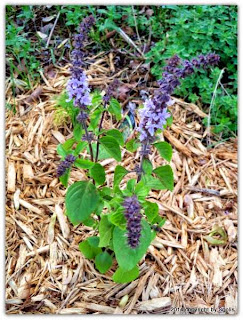Normally
I grow lavender, aloe Vera and German chamomile, rosemary lemon balm, and peppermint in my medicinal herb gardens
but this year I intend on growing lemon balm, witch hazel, and St.
Johns wort, thus creating a medicinal herb garden that will ease my
aches, pain, heal cuts and help me to get to sleep.
 |
| Pretty yellow flower of the St Johns Wort herb plant |
A photo of lemon balm growing in my garden. The leaves look like mint, and the entire plant has a strong lemon scent. The bloom attracts butterflies.
The
lavender, chamomile, and lemon balm are good for relieving stress and are
a natural sleep remedy. Aloe Vera is good for stomach upset and
constipation when taken internally however this herb is also good for
your skin, a natural remedy for burns, and when used as a moisturizer
will reduce the signs of aging. Witch hazel makes an excellent
compress for bruises and St. Johns wort is an anti-inflammatory and
is good when used as a compress for small cuts or wounds. It can also
be used to treat stomach upset and mild depression.
 |
| Rosemary in garden |
I
grow these medicinal herbs in gardens outdoors, the Aloe Vera is
grown in my kitchen in a container. My gardens are raised beds with
organic soil. The area is sunny with partial shade in the afternoon
because my summers are too darn hot.
When
it comes to growing a medicinal herb garden I care for my plants by
watering them in the early morning. And when it is really hot I will mist
the herb garden in the late afternoon to prevent the flowers and
leaves from wilting.
In
the past, I have been successful in growing a variety of herbs in the
garden and I am looking forward to growing new herbs; witch
hazel, and St, Johns Wort this year.
View this youtube video to learn about other medicinal herbs that you can grow in your garden.












